
The Chthamalidae are a family of chthamaloid barnacles, living entirely in intertidal/subtidal habitats, characterized by a primary shell wall of eight, six, or four plates, lacking imbricating plate whorls, and either membraneous or more rarely calcareous basis. They are not found below immediate subtidal habitats, and more likely are found in the highest tier of shallow-water barnacle fauna. They can be found in the most rigorous wave-washed locations, and some species are found in the surf zone above high tide mark, only receiving water from wave action at high tide.
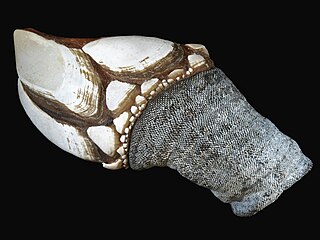
Pollicipes is a genus of goose barnacles, first described by William Elford Leach in 1817. It comprises four species of marine suspension-feeders.
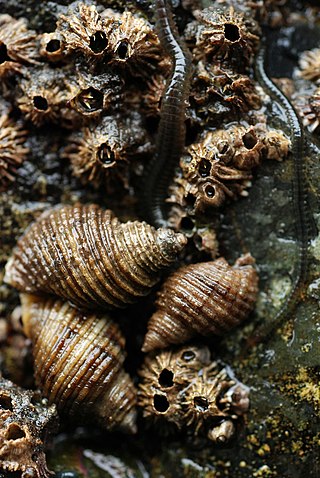
Semibalanus is a genus of barnacles, comprising four species. It is the only genus in the subfamily Semibalaninae.

Dosima is a genus of goose barnacles in the family Lepadidae. There are at least two described species in Dosima.
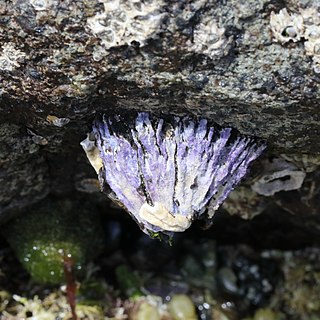
Austrobalanus is a genus of symmetrical sessile barnacles in the family Austrobalanidae, the sole genus of the family. There are at least three described species in Austrobalanus.
Lithoglyptida is an order of barnacles in the class Thecostraca. There are 2 families and more than 40 described species in Lithoglyptida.
Iblomorpha is a small order of barnacles in the class Thecostraca. There are only two families and about eight described species in Iblomorpha. In this group we find barnacles that use calcium phosphate in their shell, and species that protect themselves against predators with poison.
Eolepadomorpha is an extinct order of barnacles in the class Thecostraca. There are 2 families and about 14 described species in Eolepadomorpha.
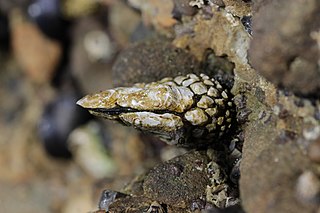
Pollicipedomorpha is an order of pedunculated barnacles in the class Thecostraca. There are 3 families and more than 30 described species in Pollicipedomorpha.

Epopella is a genus of symmetrical sessile barnacles in the family Tetraclitidae. There are about six described species in Epopella.

Jehlius is a genus of star barnacles in the family Chthamalidae. There are at least two described species in Jehlius.
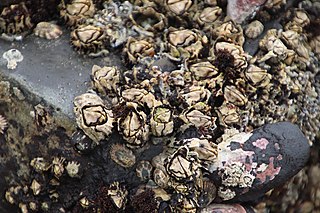
Octomeris is a genus of star barnacles in the family Chthamalidae. There are at least three described species in Octomeris.
Tetrachthamalus is a genus of star barnacles in the family Chthamalidae. There are at least two described species in Tetrachthamalus.
Chinochthamalus is a genus of star barnacles in the family Chthamalidae. There is one described species in Chinochthamalus, C. scutelliformis.
Pseudoeuraphia is a genus of star barnacles in the family Chthamalidae. There is one described species in Pseudoeuraphia, P. montgomeryi.
Caudoeuraphia is a genus of star barnacles in the family Chthamalidae. There is one described species in Caudoeuraphia, C. caudata.
Hexechamaesipho is a genus of star barnacles in the family Chthamalidae. There is one described species in Hexechamaesipho, H. pilsbryi.

Microeuraphia is a genus of star barnacles in the family Chthamalidae. There are about eight described species in Microeuraphia.
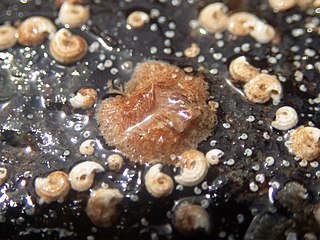
Verruca is a genus of asymmetrical sessile barnacles in the family Verrucidae. There are about 20 described species in Verruca, around half of them extinct.










